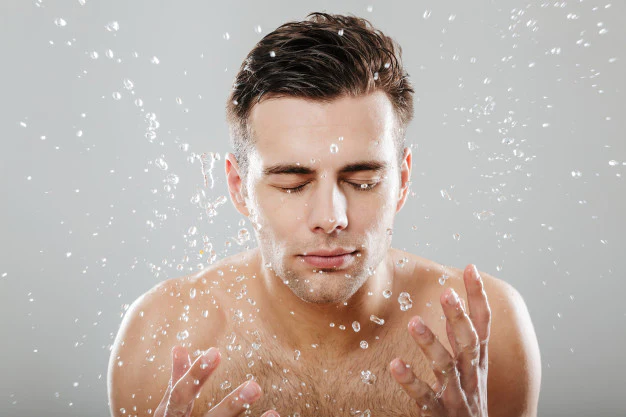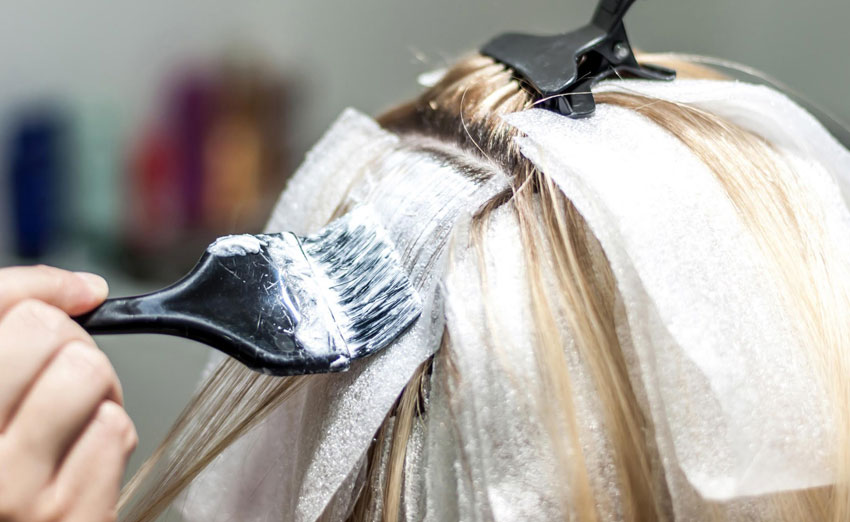Your tan lasting for months is likely due to the accumulation of melanin in response to sun exposure. Skin type, genetics, and skincare habits can influence the longevity of your tan.
Understanding why tans last for months is important for those who love to soak up the sun’s rays and enjoy a golden glow on their skin.
Many people cherish the look of a sun-kissed complexion and want to maintain it for as long as possible.
By delving into the science behind tans that last, we can uncover valuable insights that can help us prolong the effects of our tanning efforts.
Whether through natural sunlight exposure or artificial methods like tanning beds or self-tanners, comprehending the reasons behind the longevity of tans allows us to make informed choices about maintaining that coveted sunkissed look.
Why Does My Tan Last for Months – Factors Influencing the Faster Fading of Tan

The lasting effect of a tan, persisting for months after sun exposure, has intrigued many. Beyond its aesthetic appeal, a tan holds significance for skin health.
Tanning is the skin’s natural defense mechanism against UV radiation, forming a protective barrier against further damage.
Understanding the prolonged duration of tans can shed light on the body’s response to UV exposure and how it strives to shield itself from potential harm.
Factors Influencing Faster Fading of Tan:
Faster Skin renewal cycle
The outer layer of your skin constantly renews itself through shedding. A faster skin renewal cycle, influenced by genetics and age, leads to quicker fading of a tan.
Epidermal Turnover Rate: The epidermis, the outermost layer of skin, undergoes a continuous renewal process. As new skin cells are generated in the basal layer, they migrate to the surface and eventually shed.
This turnover rate varies among individuals and can impact the persistence of a tan. Research by Kligman and Zheng (1985) showed that the epidermal turnover time is approximately 28 days in younger individuals, but it can extend to 45 days or more in older individuals.
A faster turnover can lead to quicker fading of a tan, as the outer, tanned cells are shed more rapidly.
Exfoliation and Tan Removal: Regular exfoliation, the removal of dead skin cells, can accelerate the fading of a tan.
Exfoliation methods like scrubbing or chemical peels target the top layers of skin, where the tan resides.
A study published in the “Journal of Investigative Dermatology Symposium Proceedings” (2008) noted that exfoliation indeed speeds up the process of tan removal by shedding the outer layers of skin containing the pigmented cells.
Lack of Hydration and Moisturization: Dry skin sheds faster. Adequate moisturization can slow down this process and extend the lifespan of your tan.
Natural Skin Tone Affect: Individuals with naturally fair skin might notice a faster tan fading due to their skin’s lower melanin content.
Sun Exposure Frequency: Continuous sun exposure accelerates the natural shedding process of tanned skin cells, resulting in a shorter-lived tan.
- Cumulative UV Exposure and Tan Fading:
- Sun exposure frequency directly impacts a tan’s longevity. Research has shown that cumulative exposure to ultraviolet (UV) radiation from the sun can lead to faster fading of a tan.
- A study published in the “Journal of the American Academy of Dermatology” (2013) by Miyamura et al. revealed that repetitive UV exposure results in the depletion of melanin, the pigment responsible for tanning.
- Melanin’s protective function against UV radiation also contributes to its breakdown over time. This indicates that frequent exposure without proper time for skin recovery accelerates tan fading.
- Recovery Time and Tan Persistence
- Sun exposure frequency and the intervals between exposures are crucial factors.
- The skin requires time to recover and replenish melanin levels after exposure. Research by Freeman et al. (2001) in the “Journal of Investigative Dermatology” highlighted the importance of melanin recovery in maintaining a tan.
- Frequent and intense sun exposure without adequate intervals for recovery can lead to premature fading.
- The study emphasized that tanning persisted longer when individuals allowed time for their skin to heal and regenerate melanin between exposures.
Chemical Exposure: Chemicals found in chlorinated water, soaps, and skincare products can strip away tanned skin cells, leading to premature fading.
Clothing and Friction: Wearing tight clothing and engaging in activities that cause friction can accelerate the exfoliation of tanned skin cells.
Sunscreen Use:
- Consistent use of sunscreen is crucial in prolonging a tan. Research indicates that UV radiation from the sun accelerates the breakdown of melanin, leading to faster tan fading.
- Regular sunscreen application with broad-spectrum protection helps shield the skin from harmful UV rays, preserving the integrity of the tanned skin.
- A study published in the “Journal of the American Academy of Dermatology” (2013) by Halder et al. underscores that sun protection significantly delays the fading process.
- By preventing excessive UV-induced damage, sunscreen ensures a longer-lasting tan while reducing the risk of skin damage and premature aging.
After-Sun Care: Proper after-sun care, including gentle cleansing and moisturizing, can help maintain the health of tanned skin cells and extend the tan’s life.
Long-term Skin Health: Your overall skin health plays a role. Nutrient-rich diets, hydration, and avoiding excessive UV exposure contribute to preserving your tan.
Knowing these factors helps you extend your tan’s duration and keep your skin healthy and radiant.
Tips for Preserving and Enhancing Your Tan

Having a tan can make you feel confident and give your skin a healthy glow. However, tans can fade quickly if not properly maintained.
That’s why it’s important to understand the significance of enhancing the long-lastingness of your tan.
By following our tips and incorporating them into your skincare routine, you can preserve and enhance your tan, ensuring that it lasts longer and keeps your skin looking beautiful.
Hydration and moisturization
Well-hydrated skin retains tans longer. Drink water and use moisturizers to prevent excessive skin shedding.
However, Hydration and moisturization play pivotal roles in tan persistence. Research published in the “Journal of Investigative Dermatology” (2009) by Boelsma et al. demonstrates that well-hydrated skin retains tans longer.
Moisturizers enhance the skin’s natural barrier, reducing moisture loss and preventing the premature shedding of tanned skin cells.
Furthermore, moisturization supports the skin’s healing processes after sun exposure, aiding melanin regeneration. The study emphasizes that hydrated skin sustains tans and promotes overall skin health.
Regularly applying moisturizers containing ingredients like aloe vera or hyaluronic acid can significantly extend the lifespan of a tan while promoting skin integrity.
Sun Protection: Use sunscreen to shield your skin from UV damage, preventing premature fading and maintaining your tan’s vibrancy.
- UV Damage Prevention: Sun protection, like sunscreen, shields your skin from harmful UV radiation. UV rays accelerate skin cell turnover, leading to faster tan fading.
Applying sunscreen reduces the impact of these rays, preserving tanned skin layers for a prolonged period.
- Conserving Melanin: Sunscreen helps maintain the melanin levels, the pigment responsible for your tan.
Excessive UV exposure can degrade melanin, causing your tan to fade more quickly. Sun protection minimizes this effect, enhancing the longevity of your tan’s color.
- Vibrancy and Evenness: UV rays can cause uneven pigmentation and sunspots on tanned skin, detracting from its appearance.
Sunscreen prevents these issues, ensuring that your tan remains vibrant and evenly distributed, enhancing its overall visual appeal.
- Preventing Premature Aging: Overexposure to the sun accelerates skin aging and causes wrinkles, reducing the youthful appearance of your tan.
Sun protection mitigates these effects, promoting healthier, more youthful-looking skin alongside your tan.
Research indicates that consistent sun protection not only safeguards your skin’s health but also contributes to the
Gradual Sun Exposure: Avoid prolonged exposure during peak hours. Gradual sun exposure helps maintain your tan without risking overexposure.
After-Sun Care: Use gentle cleansers and moisturizers after sun exposure to soothe and nourish your skin, aiding in tan preservation.
There are multiple branded cleansers and moisturizers that help to enhance the tan of your skin. They include,
Cleanser
- CeraVe,
- La Roche-Posay
- Cetaphil
Moisturizer
- Hawaiian Tropic,
- Jergens, Australian Gold
- Neutrogena
Avoid Harsh Chemicals: Refrain from using products containing harsh chemicals, as they can strip away tanned skin cells.
Exfoliation Moderation: Limit exfoliation routines to prevent the removal of tanned skin layers, maintaining your tan’s longevity.
Healthy Diet: Consuming foods rich in carotenoids can help promote a healthy skin tone and potentially enhance your natural tan.
Foods like carrots, sweet potatoes, spinach, kale, and tomatoes are high in carotenoids, which can give your skin a slightly warmer and golden hue.
Additionally, foods rich in vitamins C and E, such as citrus fruits, berries, and nuts, can support skin health and contribute to a glowing complexion.
Remember, while these foods may provide a subtle enhancement, they won’t replace the primary influence of sun exposure on tanning.
Clothing Choices: Choose loose-fitting clothing to minimize friction that can accelerate the shedding of tanned skin cells.
Tanning Lotions and Oils: Using specially formulated tanning lotions or oils can enhance and prolong your tan’s appearance, providing a protective barrier.
The most popular tanning lotions and oils come from the brand in the UK,
- St. Tropez,
- Bondi Sands,
- Fake Bake,
- Cocoa Brown
By following these tips, you can effectively preserve and enhance your tan, keeping your skin looking radiant and sunkissed for longer.
FAQs
How long does a tan usually last?
Typically, the tan lasts 7-10 days. However, you can Extend the lastingness of tan on your skin till 10 days with proper care and moisturizing.
Does skin type affect tan longevity?
Yes, individuals with more melanin-rich skin tend to retain tans longer, as melanin provides better protection against UV radiation and helps maintain color.
Can genetics influence tan persistence?
Yes, Genetic factors can determine how much melanin your skin produces and how well it’s retained, affecting how long your tan lasts.
Do moisturizers affect tan longevity?
Yes, Keeping your skin well-moisturized can help prolong your tan by preventing excessive shedding of skin cells, which contributes to tan fading.
Does sun exposure affect tan duration?
Yes, Regular sun exposure, especially without protection, can increase melanin production and extend the duration of your tan.
How can sunscreen impact tans?
Using sunscreen can prevent excessive sun damage, which can speed up the shedding of tanned skin cells, potentially reducing the longevity of your tan.
Can exfoliation affect tans?
Yes, Frequent exfoliation can remove the outermost layers of skin, leading to faster fading of your tan.
Do artificial tanning methods last longer?
No, Artificial tanning methods don’t last longer.
Spray tans and self-tanners provide color that typically lasts around 1-2 weeks, but their longevity can vary based on application and aftercare.
Is prolonged sun exposure harmful?
Yes, prolonged sun exposure can damage your skin and increase the risk of skin cancer. Protecting your skin and using safe tanning practices is essential for your health.
Conclusion
The long-lasting benefits of a tan can be attributed to several factors, including increased melanin production and skin cell turnover.
However, it is crucial to practice responsible tanning to maintain the health and integrity of our skin.
This includes using sunscreen, avoiding prolonged sun exposure, and moisturizing regularly.
By following these practices, we can enjoy the long-lasting benefits of a tan while keeping our skin safe and healthy.
So, let’s embrace responsible tanning practices and enjoy the beautiful glow that lasts for months.











